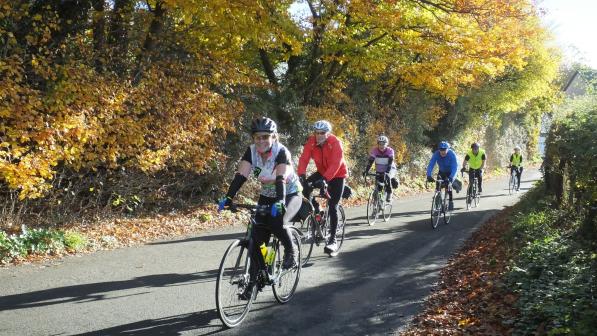Meet our members: Bike shop owner Rob Thurston

We share a language, a healthy cynicism of our governments and a love of coffee. But when it comes to cycling, Americans and Brits are as different as our definition of football.
As an avid cyclist, I have experience of cycling in major cities throughout the US, including Philadelphia, Chicago, New York and Washington DC. More recently, in the process of joining my partner in London, I’ve had the pleasure of exploring this great city by bicycle. My experience indicates similarities but also stark disparities in attitudes and provision for cyclists between the two countries.
UK cycling vs US cycling
My initial impression is that cycling is massively more popular in London than in any US city that I’m familiar with. My London flat is on the busy CS7 that connects outer boroughs to the City, and I am overwhelmed by the sheer volume of cyclists on it every day.
I am also struck by the few riders wearing helmets, whereas seeing riders in the US without a helmet is extremely rare. This may relate to differences in road safety between the two countries. In London, there are many protected routes and ‘quiet ways’. In New Jersey and Chicago, where I’ve done most of my cycling, the routes are mostly unprotected roads without shoulders.
Underpinning this difference is the attitude towards automobiles. Most Americans, even those living in urban neighbourhoods, would expect to use their car for virtually every errand, from picking up groceries to nipping to the local drive-through for a take-away coffee. US towns and infrastructure are designed for car use. Britain, on the other hand, has evolved mostly from small villages that contain everything you need in the local shops. Accessibility to these places by bike or walking is still very simple.

Cycling in America is primarily for leisure or fitness purposes. Although this is also true in the UK, my observations in London suggest the importance of cycling for utility purposes: the tsunami of cyclists during rush hour; cargo bikes carrying groceries and/or children; secure bike parking facilities at shopping malls.
But there’s a different way of thinking over here. I have noticed that far greater importance is given to environmental issues. While the UK media doesn’t shy away from reporting climate change and environmental pollution, one almost never sees climate change discussed in American media, let alone how cycling is one way to reduce carbon emissions. This is undoubtedly the impetus behind many initiatives that are taking place across London and the UK, such as the expansion of the Ultra-Low Emissions Zone; the rise of low traffic neighbourhoods; improvements to cycling infrastructure; and the government-subsidised Cycle to Work scheme. I have never heard of any scheme by federal, state or local governments in America where they will help you buy or rent a bike to ride to work.
The variety of available cycling groups
Finally, an eye-opener for this American was the vast number of opportunities in the UK to join a cycling group. Options vary from large to small, formal to informal, fee to free and everything in between. In America there are cycling ‘clubs’ but they are formally organised and require substantial fees to join. Informal gatherings of cyclists who just go for a ride are not so common in the US as in the UK.
While London is not quite Amsterdam, the developments that I have witnessed here are extremely encouraging. I am quite content to make London my new home and look forward to a future in which cycling as a mode of transport becomes the norm. You may see me on CS7 or popping in for a coffee at a local café. Do stop and say hello. I promise I won’t say “Cheerio” back.
Cycle magazine
Every two months Cycling UK members receive Cycle magazine, filled with interesting and informative articles, news and reviews for all cyclists.
Members can read the magazine in full online; non-members can read selected highlights.

